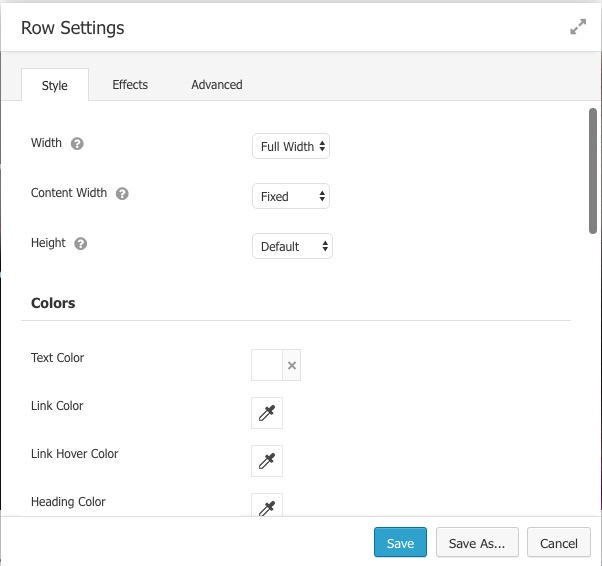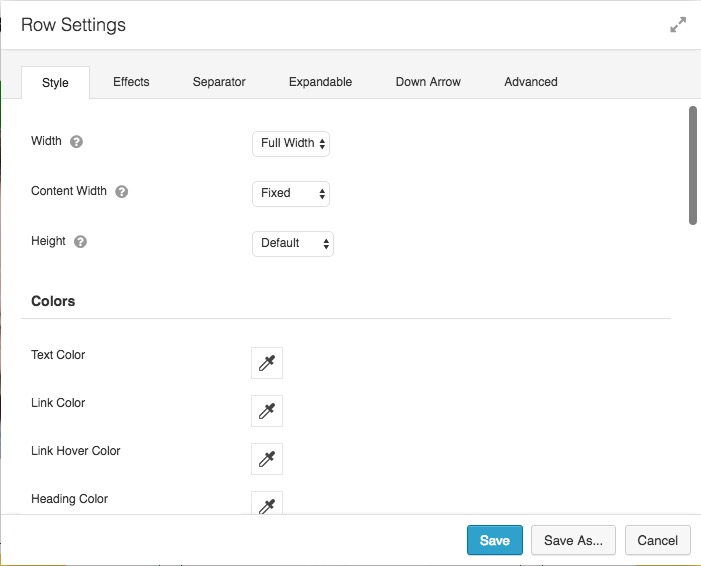The future of Beaver Builder plugin and its add-ons: clients perspective
The Beaver Builder plugin is a great pagebuilder with enough modules and templates to make appealing pages. Beaver Builder gained market share because of its clean code, its friendly user-interface and its non-destroying content after de-activating the plugin. Our analyses on current 3rd party add-on developers.
 First of all the market of 3rd party add-ons just recently began to develop. First player was Jon Mather with his BeaverLodge collection of add-ons. The user interface followed the base on how the Beaver Builder developers thought to do things right. And with (only) BeaverLodge installed, there was no problem. Users could switch on or off the modules they wanted in the front-end list, to keep things as clean as possible. But things changed.
First of all the market of 3rd party add-ons just recently began to develop. First player was Jon Mather with his BeaverLodge collection of add-ons. The user interface followed the base on how the Beaver Builder developers thought to do things right. And with (only) BeaverLodge installed, there was no problem. Users could switch on or off the modules they wanted in the front-end list, to keep things as clean as possible. But things changed.
• There is no easy ‘this is the best in the marketplace’ at this moment
• Follow all comments on the BB Facebook group
More players
Jon was not the only one and at least two more players entered the playing field. PowerPack and Ultimate Addons also addes their own collections of add-ons. UABB also added a collection of templates. Both Puneet Sahalot (PowerPack) and Sujah Pawar (UABB) are very active contributers in their Facebook group communities, which are in both cases a perfect ‘marketing taste and test area’ for the development of both products.
How far should add-on developers go?
First of all adding all major plugins together will ‘consume’ 30.9MB within your WordPress installation, added up from (*):
- Beaver Builder base plugin: 12,3MB
- UABB plugin: 9,4MB
- BeaverLodge plugin: 6,1MB
- PowerPack plugin: 3,1MB
(*) There are many more smaller add-on with various purposes
 Not all are needed at once and even some modules are in some way or another overlapping eachother. Look at the listing of all modules from the ‘big 4’ made by Ian Thompson from Beaver Brains. For web developers this list is a good start to make a kind of a choice whether or not to use one of more add-ons.
Not all are needed at once and even some modules are in some way or another overlapping eachother. Look at the listing of all modules from the ‘big 4’ made by Ian Thompson from Beaver Brains. For web developers this list is a good start to make a kind of a choice whether or not to use one of more add-ons.

Basic row settings with Beaver plug-in activated
However in cases some add-on developers have some kind of ‘take-over’ approach. What does that mean? It is possible to add some own settings to already existing modules from another. For example the base of the row settings in the Beaver Builder Plug-in offers three tabs to do the things the Beaver Builder developers think that should be in it.

Extra row settings done by PowerPack
After activating PowerPack another set of tabs will be added to the row-settings, to get ‘more things done’. We ask ourselves if this is the way to go to develop things further with the web developer and even the end-user in mind.
The community is feeding them all
The 4 facebook groups all together serve about 4200 users (with about 2750 for Beaver Builder alone). All they say will for sure influence many of their feature developments. Things have been kind of hectic the last months and even experienced web developers could not follow all aspects of what everyone was doing.
The base of what is going on now, is a missing add-on user-experiences guidline. Jon Mather was the one who was preparing seperate plugins for each module. An approach we (at least) would have liked to be taken over by others. But that did not happen. Making choices for modules would be a logical way to go. Making a choice for a module developer is way more difficult.
Also templates
Not only modules is a challenge to get things well organized, UABB also added a set of templates in their add-on. And that made the plugin the heavist one with 9,4MB, and asking for more RAM assigned (256MB) to WordPress if activating all templates. If ‘others’ will also start to do this, it will for sure slow down performance in any possible way.
Impact
 Together with David Waumsley we looked at some aspects around the use of the various plugins with the P3 Profiler plugin:
Together with David Waumsley we looked at some aspects around the use of the various plugins with the P3 Profiler plugin:
- Beaver Builder plug-in only: plug-in load time 0,211 sec, 91% (0,1914 sec) for Beaver Builder plug-in
- BB + PP + UABB: plug-in load time 0,967 sec, 26% (0,2494 sec) BB, 43% (0,4158 sec) UABB, 26% (0,2562 sec) PP
- BB + PP + UABB + BL: plug-in load time 0,949 sec, 24% (0,2313 sec) BB, 43% (0,4067 sec) UABB, 15% (0,1402 sec) PP, 7% (0,0633 sec) BL
In the cases above it nearly does not matter whether modules are switched on or off. We also tested some speedtests (based on one page), not for the absolute values, but just for the relative values:
Starting with only BB plugin activated:
- GTMetrix (London): 3 sec
- Pingdom (Stockholm): 2.7 sec
Together with PP activated:
- GTMetrix (London): 2.9 sec
- Pingdom (Stockholm): 2.87 sec
Together with UABB activated:
- GTMetrix (London): 3.0 – 3.2 sec (various tests)
- Pingdom (Stockholm): 3 – 3.22 sec (various tests)
For that we can conclude that the influence on pagespeed of using all the plugins together is relatively small. The TTFB (Time To First Byte) makes a 50% difference in loading the site with or without the 3 add-on plugins. With all activated the TTFB was 1 sec, al de-activated TTFB was 500ms. With 30,9MB and about 30MB for WordPress with Beaver Builder theme, that difference seems logical. Note: we are just testing these figures for relative comparisons, not for absolute values.
One possible wishlist
Based on our experiences in this playing field we could create ‘one’ wishlist as follows:
- individual light-weight(!) plugin per module with a well defined user experience structure to add the plugin to the Beaver Builder eco system
- a well thought user interface in the front-end for choosing the modules and their settings
- no take-overs within modules from others
- individual templates to be uploaded and shown in the template section in the dasboard with the possibility to easily assign them to individual or more pages
Will this happen?
We hope so, but on the short term we don’t expect this to happen very soon. The market is still jumpy and others might also enter this playing field.





Thanks for this analysis, there’s a lot of really good data here! So in the case of the P3 Profiler tests it doesn’t matter if the plugins are actually used in modules or not, the times are about the same?
For als far we could test, the results are the same
Hi Nancy – who knew right? I could be a quirk of the P3 profiler (which still does not work with php 7 so all was tested on 5.6 or 5.4) I don’t think so though judging the perceived speed on a slow set up with everything on and off.
Peter and I were testing together on different environment and got the same (ish). I tested too just before and locally with Desktop Server.
Isolating the backend from frontend pages in WP… and turning off and on all modules and template – it was the same. I did not quite expect that so did it quite a lot of times making sure to visit the same pages each time. It applied to BB, PP and UABB (do you just love acronyms).
Look what happens when we get chatting. Thank you so much Peter. I so much wanted to say something like this and get it out there for discussion and you made it happen.
You have been saying it along , of course, but recently it has been like a rather large elephant in the room.
Justin Busa comment about Beaver Builder better accommodating 3rd party plugins in BB2.0 (with some standards to match) is music to my ears
Thanks again Peter for your thought and friendship.
Thanks David for your comments and kind words
Thanks for bringing this up. It’s been on my mind lately with all the great add-ons cropping up in the market.
Thanks Peter,
These are good insights to have. The Newsletter plugin comes with one free module and many premium extensions all at one price. I hope to see that. Get one extension package, try many things and then only load what you need, rather than many separately priced things.
I hope BB would not hesitate to add functionality to the core that they find useful, even if something similar already exists in an add on.
Wow, what a great post and discussion here. As one of the developers of UABB, let me address the point you guys have brought below –
1. UI
We’ve kept UABB UI as minimal as possible and in line to the BB core. While adding any option, our intention always is to remain inline with the BB family so UI won’t be totally different from the core styling. Furthermore while doing this, we try to stay distinct enough; so users won’t be confused and feel that our features are part of the core functionality.
In fact – any small features that needed core real estate, we have suggested them directly to core developers; sometimes with readymade code and pull request on Git.
2. Memory
I believe it is the memory recommendation note we display on UABB templates setting page that confused a lot of users. UABB certainly does not require 256 MB but it’s just a recommendation. However, there is certainly a scope for improvement. We’re debugging how we could optimize our current codebase for better performance you should see the different in near future update release.
3. Templates & All in One Approach
We’re developing a feature that would allow users to preview templates in their backend and download only those that they find useful for their project (rather than loading all of them) I agree “all in one” approach is in many ways is concerning. However we’re making everything possible modular. So any features that you don’t want on your particular site, can be easily turned off.
Do you have any further suggestions from here? Please feel free 🙂
Thanks for your clear explanation of directions where you are going. It for sure helps us all if we all understand the roadmaps of the combined BB, UABB and PP playingfield.
Thanks Sujay for commenting above I may as well add my FB comment here too.
“Indeed, this is all new. I have always shared Peter’s view that packs (that load in everything) are problematic in the Beaver Builder community for long term progression.
Not just technical compatibility or server load, but in creating competitive divisions in the community where instead of working to make BB better in specialized areas we end up with separate Beaververses…
That probably won’t happen – as with the more developer lead communities longer term relationships form. See how the polls on the packs now have so many saying get both. Sure, much of the community want everything, but just as important it wants to stay together with one voice and direction behind Beaver Builder. It wants to thank all who brings new and exciting stuff to it
I am a fan of both PP and UABB because they represent the best things we have ever had, but to use both for everything is tricky – all the right stuff is there in the wrong delivery package at the moment.
The work the BB team seem to be doing on better facilitating addons in 2.0 and the recommendations that will come with it should sort much out in community.
Beaver Builder is a flexible framework for WordPress that improves the usability on the front end for all our clients. All clients love the ease of use of BB. Our team has more time to find the right solutions for clients and organize their content more effectively in record time. Thanks for sharing speed tests as this supports our I.T.s decision of this tool the past year.